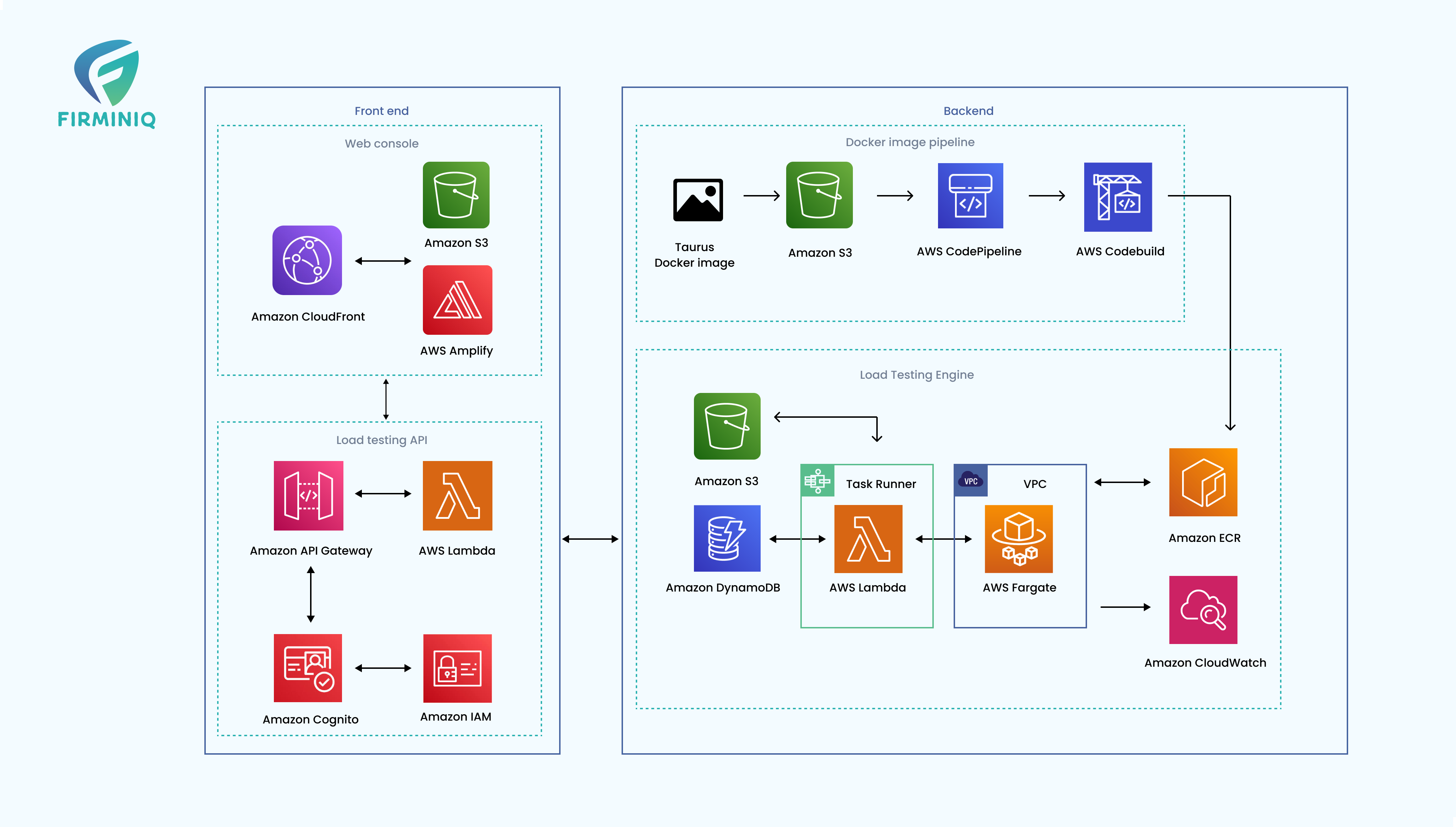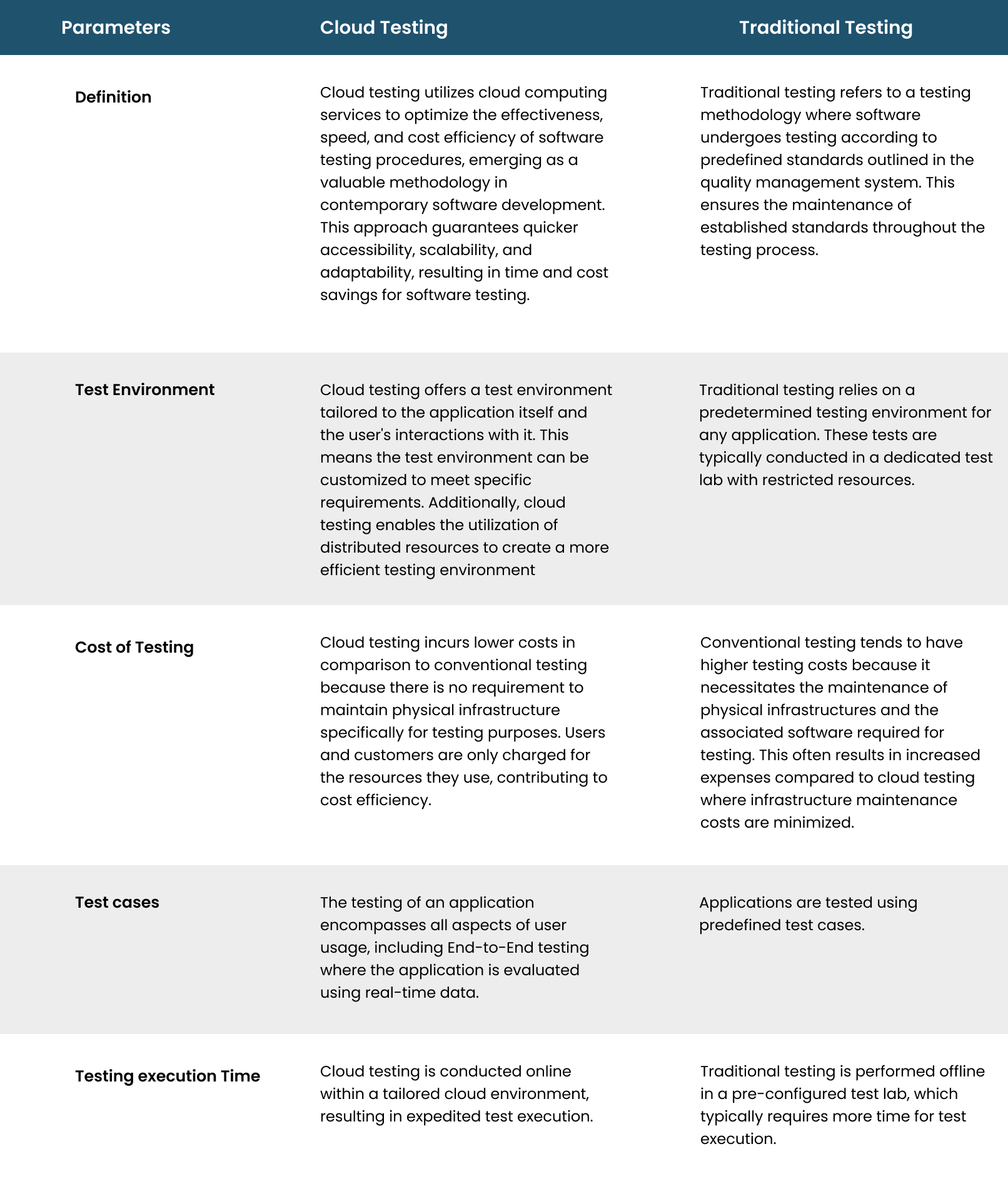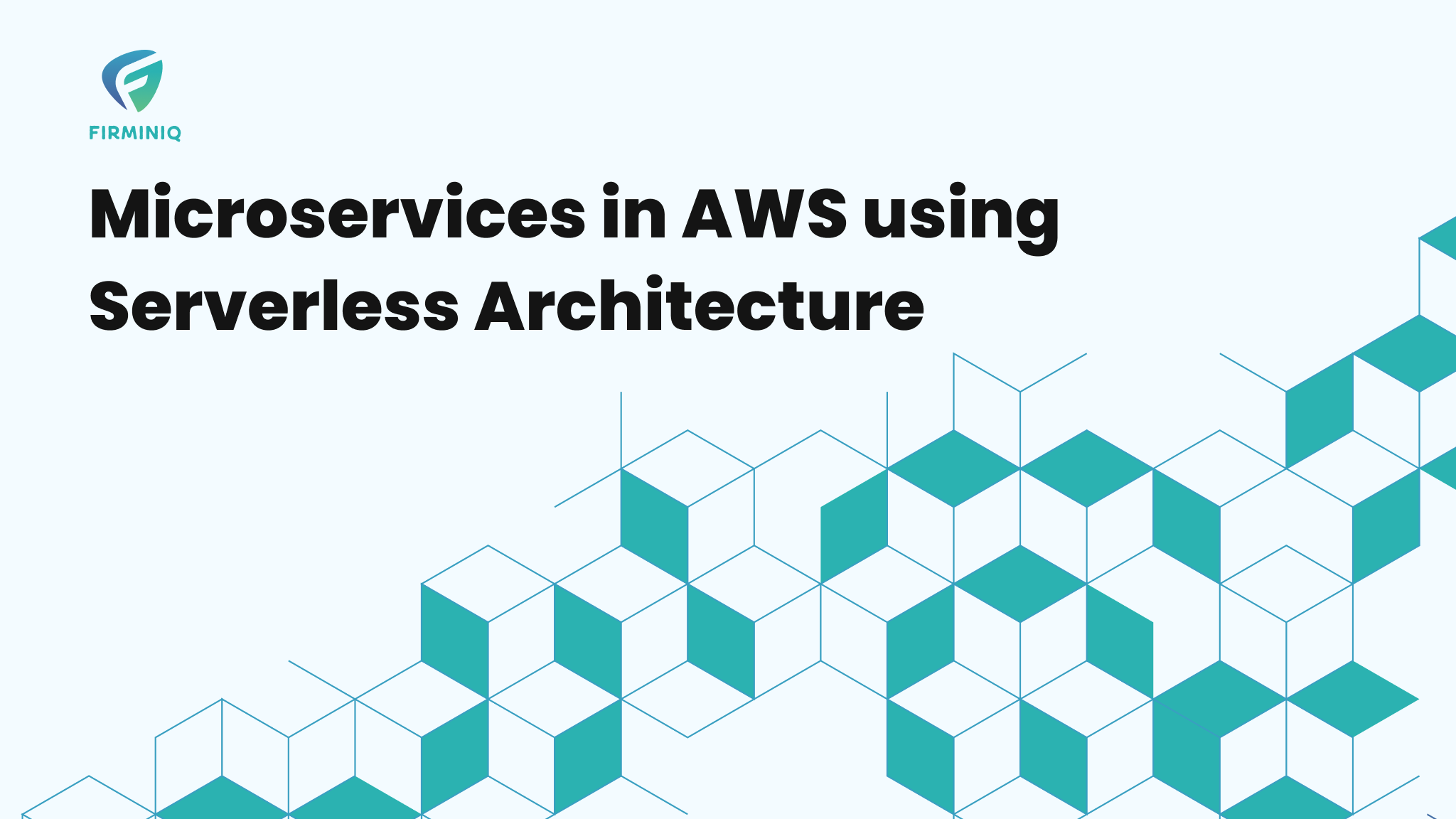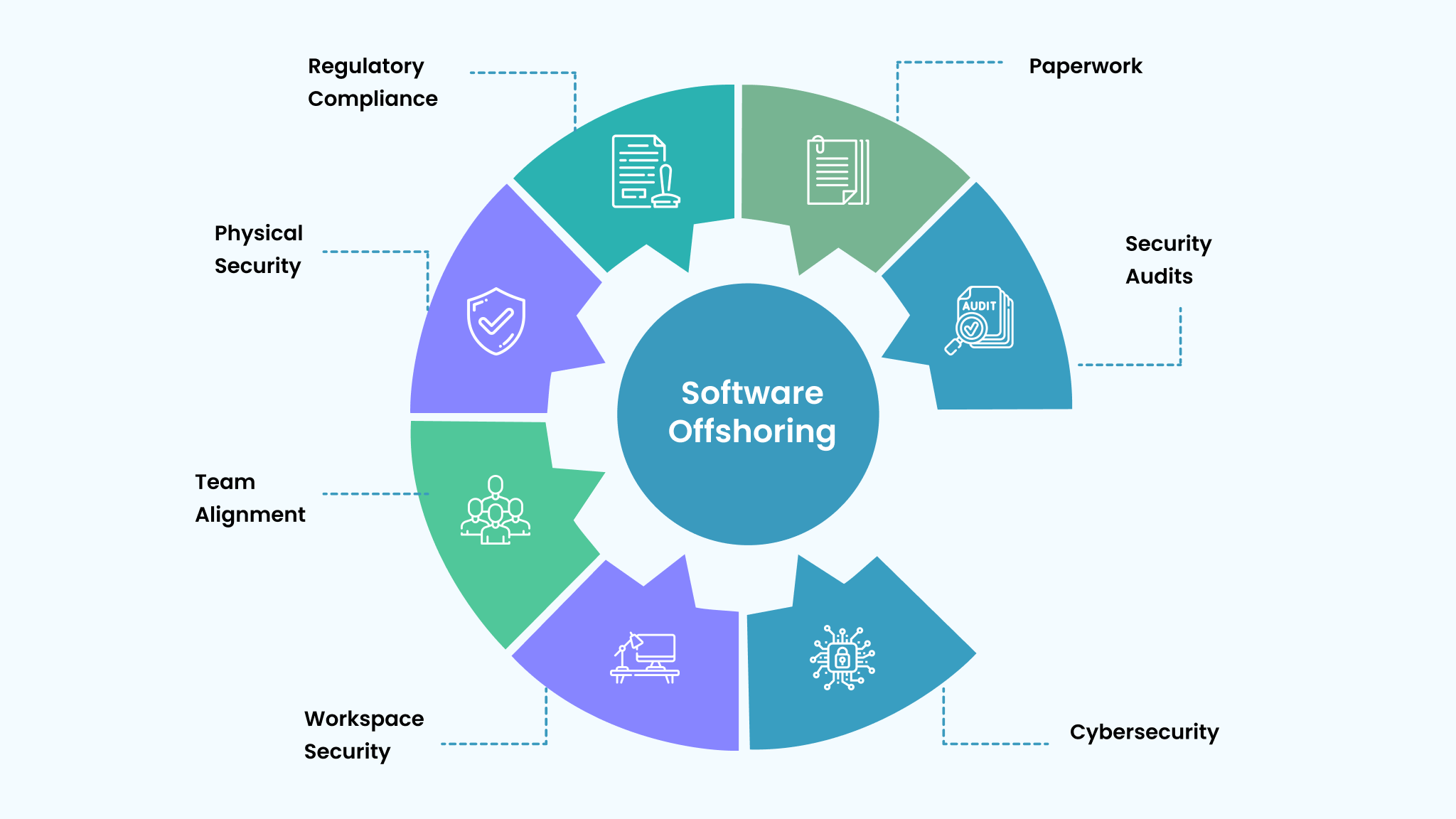Cloud test automation, a methodology utilizing cloud technologies, accelerates software testing and streamlines release cycles by swiftly creating test environments. This allows development teams to consistently build, test, and release products without additional infrastructure. Ideal for organizations aiming to reduce testing cycles and enhance release speed, cloud-based test automation offers unmatched flexibility.
In the dynamic software development landscape, efficient testing methodologies are paramount. Cloud testing, leveraging cloud computing services, stands out for its speed, scalability, and cost efficiency. In contrast to traditional methods, cloud testing provides unmatched advantages, including scalability, cost efficiency, diverse environments, flexibility, and rapid deployment. Let us explore these benefits, compare traditional and cloud testing, and delve into the specific relevance of cloud testing in the context of Remote Patient Monitoring (RPM).
Key Reasons Why Cloud-based Testing is Necessary
Cloud-based testing is imperative for several reasons. Have a read through these reasons below:
- Scalability: Cloud based testing allows for the scalability of testing environments. Testing in the cloud enables the quick provisioning of resources, allowing teams to scale up or down based on testing needs. This is particularly beneficial when dealing with large-scale or complex applications. Additionally, this is advantageous for handling large-scale testing scenarios, such as performance testing with a high volume of concurrent users or stress testing.
- Cost Efficiency: Cloud-based testing contributes significantly to cost optimization. Traditional testing environments often require heavy upfront investment in hardware and infrastructure. With a pay-as-you-go model, testing teams can use cloud resources on-demand and this reduces overall costs.
- Access to Diverse Environments: Cloud-based testing platforms offer a wide range of environments and configurations that may not be readily available in on-premises setups. This flexibility is crucial for conducting compatibility testing across various operating systems, browsers, and devices. With this testing can be performed across different operating systems, browsers, devices, and network conditions. This ensures comprehensive test coverage.
- Flexibility and Agility: Cloud based testing provides flexibility and agility in terms of resource allocation and test execution. Teams can easily configure different testing environments, simulate various scenarios, and perform tests in parallel. This agility is valuable in dynamic development and testing environments where requirements and configurations change frequently. Additionally, this agility is pivotal in the fast-paced development cycles of today.
- Disaster Recovery: Cloud platforms typically include robust disaster recovery features. In the event of a failure or data loss, cloud-based testing environments can be quickly restored to a previous state, minimizing downtime and data loss.
- Global Collaboration: With teams and stakeholders often distributed across different locations, cloud testing facilitates collaboration. Testing environments can be accessed remotely, allowing teams to collaborate in real-time, share results, and coordinate testing efforts seamlessly.
- Rapid Deployment: Cloud testing enables rapid deployment of testing environments, reducing setup time, and allowing teams to start testing sooner. This is particularly advantageous in Agile and continuous integration/continuous deployment (CI/CD) workflows, where quick feedback is crucial.
- Resource Optimization: Cloud testing allows for better resource utilization. Testing environments can be provisioned and de-provisioned as needed, preventing idle resources, and optimizing the use of computing power during testing cycles.
Cloud Testing vs Conventional Testing
Further, let us explore the differences between Cloud Testing and Traditional Testing, emphasizing parameters including tailored test environments, cost efficiency, diverse testing scenarios, and expedited execution times.
Leveraging Cloud-based Testing for RPM
At FIRMINIQ, cloud-based testing has been leveraged to provide a solution RPM successfully. RPM is a healthcare practice that involves using technology to monitor patients’ health outside of traditional healthcare settings. It typically utilizes devices to collect patient data, such as vital signs, and sends this information to healthcare professionals for analysis and intervention.
Integrating cloud-based testing practices with Remote Patient Monitoring systems can contribute to the reliability, security, and performance of healthcare solutions, ultimately benefiting patients and healthcare providers. However, it’s crucial to prioritize patient privacy and data security when implementing and testing these solutions.
Cloud-Based Testing in the Context of Remote Patient Monitoring:
1. Security and Privacy Testing
- Objective: Ensure that the cloud infrastructure used for storing patient data complies with healthcare privacy regulations (e.g., HIPAA) and that robust security measures are in place.
- Testing Focus: Conduct penetration testing, data encryption testing, and vulnerability assessments to identify and address potential security risks.
2. Integration Testing
- Objective: Ensure seamless integration between the RPM devices, sensors, and the cloud platform where patient data is stored.
- Testing Focus: Test data transmission protocols, API integrations, and interoperability between different devices and software components.
3. Performance and Scalability Testing
- Objective: Validate that the cloud-based infrastructure can handle the influx of patient data and scale efficiently to accommodate increasing numbers of monitored patients.
- Testing Focus: Conduct performance testing, including load testing and stress testing, to simulate various scenarios and assess the system’s responsiveness.
4. Data Backup and Recovery Testing
- Objective: Verify that the cloud-based storage system has robust backup and recovery mechanisms to prevent data loss and ensure data integrity.
- Testing Focus: Simulate data loss scenarios and assess the effectiveness of backup and recovery processes.
5. Usability and Accessibility Testing
- Objective: Assess the user-friendliness of the interfaces used by healthcare professionals to access and interpret patient data from the cloud platform.
- Testing Focus: Evaluate the accessibility, navigation, and overall usability of the monitoring system’s user interfaces.
6. Regulatory Compliance Testing
- Objective: Ensure that the cloud-based infrastructure complies with healthcare regulations and standards applicable to patient data.
- Testing Focus: Conduct audits and assessments to verify adherence to regulations such as HIPAA and other relevant healthcare standards.
Winding Up
To summarize, the adoption of cloud-based testing stands as a game-changer in software development, providing agility, cost-effectiveness, and rapid deployment. The contrast between Cloud Testing and Traditional Testing emphasizes the former’s advantages in tailored environments, cost efficiency, and faster execution.
For organizations seeking efficient and secure software testing, embracing cloud testing is imperative in today’s dynamic technological landscape. FIRMINIQ’s success in integrating cloud-based testing for Remote Patient Monitoring showcases its potential in critical domains.
Are you ready to elevate your testing processes? Explore the benefits of our cloud-based testing services to enhance reliability, security, and performance. Contact us today for a consultation and take a step towards efficient and future-ready software testing.







